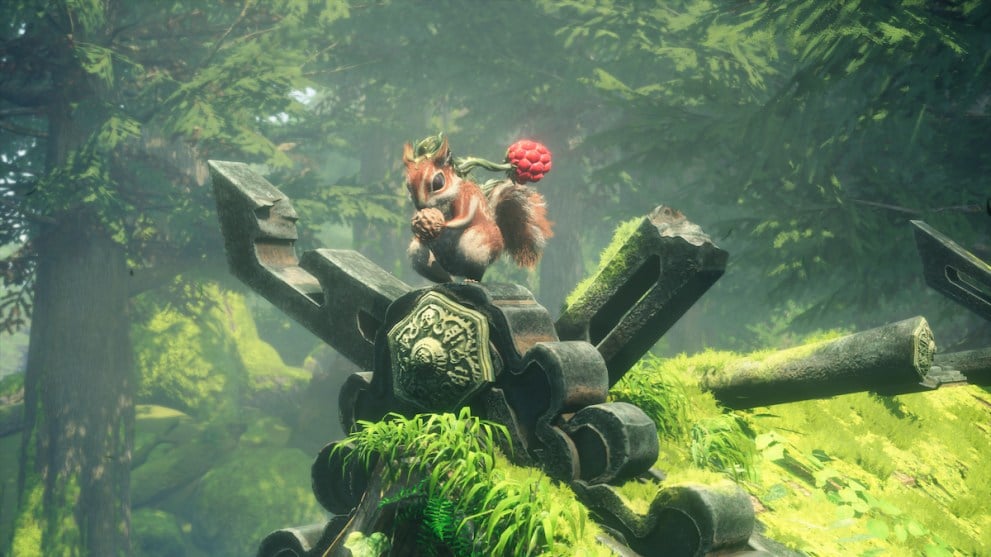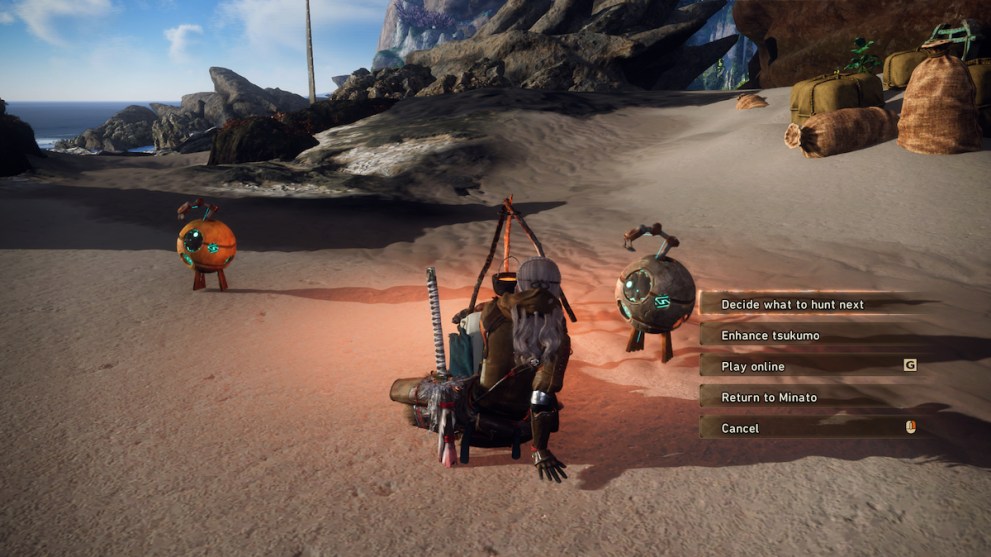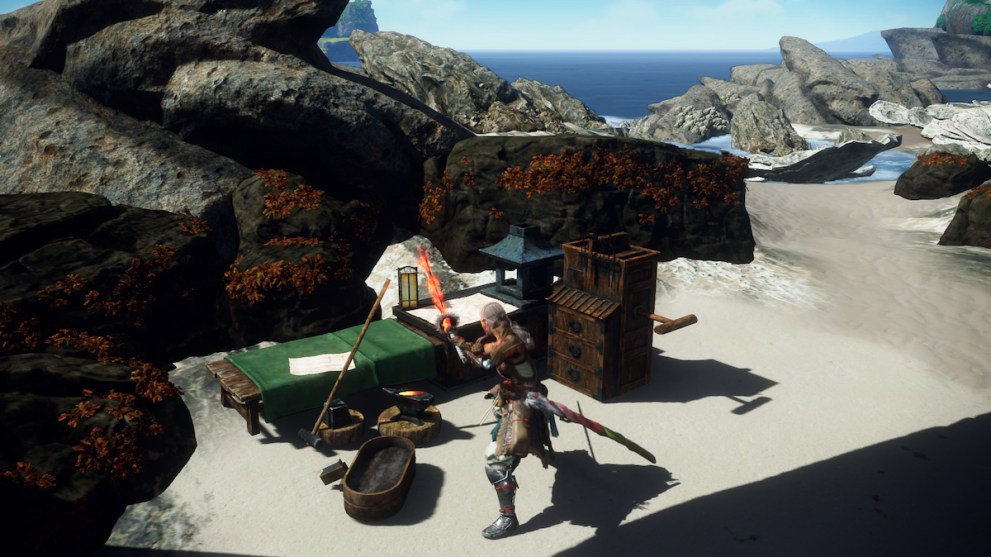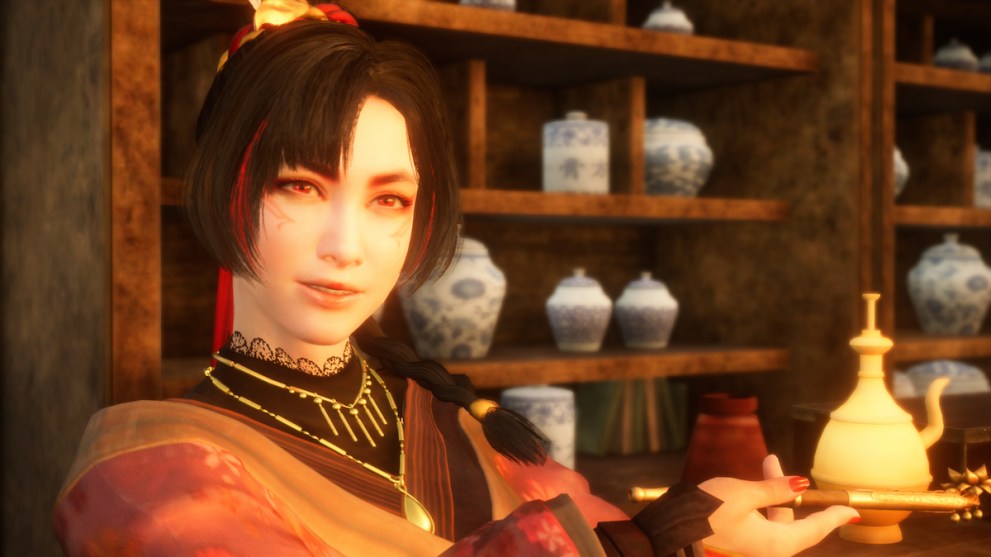Very rarely, a video game will come along and absolutely blow my mind. Wild Hearts did just this, as I took the opportunity to dive straight into it after having previously struggled with Monster Hunter. Part of me expected my experience with Wild Hearts to be the same, one marked primarily by my inability to grasp the combat or fully immerse myself into the world.
Another voice within me saw the new game as an opportunity to finally spark an interest in the monster-hunting craze that had long been in vogue in the gaming community. The latter voice came through victorious as I quickly became engrossed in the floral feudal Japan Wild Hearts presented me with.
The world is vocal about dismissing those who judge books by their covers, but a few of us can admit to actually being those people. I am those people. The visual appeal of a video game is one of the most important factors that comes into play for me when I consider whether or not I will have an enjoyable experience.
If the world seems dreary, the characters appear to be bland, or the flora and fauna do not leave a striking impression on me, I will likely pull myself through the game for the sake of its story or give up on it altogether if there are no redeeming qualities outside of its visuals to be found. Wild Hearts ticked every single one of my requirements there, from its breathtaking world design to its convincing characters.

After experiencing the sheer awe that the world’s beauty stirred within me, I spent ages fiddling around with the character customization. I cannot overstate my satisfaction with the amount of options the game provides players with there. You can edit any facial feature to your liking, choose from a good variety of hairstyles, and change the color and size of everything.
I probably spent a ridiculous amount of time in the creation menu, swapping between nose shapes and hair lengths. Seriously, the only thing more intriguing than the appearance of the hunter you can create is the appearance of the Kemono roaming the game. Kemono are the monsters roaming Wild Hearts’ world and are the object of a player’s hunts.
The work that went into making each Kemono makes me understand why there is not yet too much diversity to be found within the game’s world. There are definitely plenty of smaller creatures lurking around, but more significant Kemono are coming with future updates and free content releases. I feel that this will add more depth to the world, but again I cannot complain about too few Kemono while acknowledging the effort that was put into the currently present ones.
They all seem so unique, from their movements to their behavior. It really makes them feel alive and it made me feel as though I was encountering real animals with different modes of living. Some Kemono, like the Kingtusk, seems to be solitary or territorial hunters while others like the Ragetail are surrounded by their offspring.
There were moments of awkwardness in which Kemono would collide with structures unnaturally, but the moments in which they interacted with their environment in a realistic manner were much more common. My Karakuri, the structures that Wild Hearts has introduced to the monster hunting genre, contributed to these interactions.
I could utilize my thread, an abundant resource found via mining rocks or chopping trees, to build boxes or springs to help aid me during hunts. By combining boxes I was able to form a Bulwark, a strong wall-like blockade, during my fight against Kingtusk. Rather than mindlessly charging toward me and colliding with the Bulwark every time I built one, the Kingtusk would actually notice it and try to destroy it to get to me.
Interactions like this helped with my immersion and made the hunts feel much more intense. In those moments I was not fighting a computer but rather a sentient, intelligent beast. This Karakuri system is one of the additions to monster hunting that hooked me while playing Monster Hunter.
It was not useful just in combat, but also throughout the world as I constructed camps that I could use for fast travel, forging, or resting. The fusion between nature and technology blended together so smoothly, it left me pleasantly surprised.

I had worries regarding the building in Wild Hearts, from the crates to the ziplines, but I actually found the inclusion of such structures ended up enhancing my experience rather than making it more difficult.
In my preview of the game, I discussed my worry regarding Karakuri in combat and how it might fare. It was not awkward or slow as I had anticipated. Once I got used to the controls, I was making use of the Karakuri in pretty much every single hunt to gain an advantage. This is also incredibly helpful when playing solo, which is how I tend to play games.
There were other features that helped me there, too, from the food buffs to the generous amount of healing water locations on each part of the map. While drinking to heal was indeed slow mid-combat, balance came in the form of the healing items’ sheer density. Playing solo was also made easier by the inclusion of a companion system, one that will likely come as a familiar implementation to fans of the Monster Hunter franchise.
Much like the Palico companions in Monster Hunter, Tsukumo in Wild Hearts serve as helpful little pets during hunts. They are small, spherical robots that can be found throughout each area of the game and subsequently upgraded. I focused on defense and attack with mine due to my reliance on solo play, but the carry capacity improvements to my thread made my gameplay experience much smoother as well.
I could focus less on finding threads while fighting and more on just constructing Karakuri to help myself. There seem to be 200 of these little guys altogether, so the upgrade possibilities are endless! Tsukumo are indispensable during solo combat, from their ability to distract the Kemono when your health hits a dangerous low to their collection of thread mid-fight for more Karakuri builds.
Tsukumo can be especially helpful depending on your choice of weapon, a decision that determines your “class” or play style in Wild Hearts. I started playing with the katana that every character begins with but ended up forging a new weapon, the Bladed Wagasa.
Basically, it functions as a spiky umbrella, taking shape as an open parasol with some nifty blades surrounding it. The jump from more versatile combat to melee was a bit much for me so I did end up going back to my katana and focusing on just upgrading it, but I love that Wild Hearts gives players so much choice.
If you prefer a heavy but slow weapon that deals a ton of damage in one blow, the game has something for you. If you prefer to get up close and personal, the Bladed Wagasa is quick and lethal. If you’re like me and you play alone, the katana or spear are more well-rounded and allow for close attacks as well as more distanced ones. The ability to swap between the weapon classes was also helpful for different hunts as some Kemono were more susceptible to damage from certain weaponry.

In terms of accessibility options, it’s hard not to praise Wild Hearts’ efforts. Players are prompted to alter any accessibility settings that they need to upon starting the game for the first time and the options offered are genuinely extensive. The steps that newer titles are taking to make gaming more accessible are commendable, and Wild Hearts is certainly no exception. Players can make the game more user-friendly by altering settings such as screen reader speed and volume, color vision deficiency support, or Karakuri stance options.
Personally, I was quick to turn the motion blur off as it tends to make me incredibly motion sick while gaming, and it turned out to be one of the few games in which this setting is super noticeable and works well to prevent nausea. I also messed with some transparency settings and text sizes due to my very poor vision which helped me quite a bit.
Regarding any negative experiences I had while playing Wild Hearts, there were a few. The one that most often broke my immersion and made my hunts needlessly difficult was the game’s performance. I have been playing on a pretty high-end PC build and have still encountered stuttering, framerate drops, and strange visual blurriness.
Playing around with my settings made it more bearable but the performance would still randomly tank and it could happen at the most inconvenient times. Those random drops were made worse by the awkward camera movements during combat, too, as I struggled to keep myself locked on my target while also searching for healing items. Hopefully, performance issues on PC are addressed promptly following the game’s full release and some minor tweaks to the camera are made.
I do also wish that solo hunts were a tad bit easier, but this could be due to my own lack of combat skill. I found some hunts quite difficult and others just impossible without help. Having another player with you is especially important if you anticipate dying more than three times (the limit during a hunt before you must restart it, much like in Monster Hunter).
Other hunters can revive you, meaning that the death will not count against the limit of three. Builds can also vary between players, meaning that one hunter can focus on healing and supporting while another can tank. It would have been nice to see the ability to make a more well-rounded solo build, but I do understand that most fans of the monster-hunting genre will be excited to join others and work as a team.

While Wild Hearts draws and improves upon features from well-loved games such as Monster Hunter, it has implemented new mechanics that work well and help attract new fans such as myself to the genre. The Kemono stand out when compared to monsters from other games as they are a beautiful fusion of both flora and fauna. More often than not, I wished that I could befriend them and not have to hunt them, but I was instead able to take my time admiring them and their behaviors from afar.
The world Wild Hearts has constructed is undoubtedly appealing, and its human inhabitants add to this appeal as well. I found each character I encountered to be unique with personal quirks and the dialogue to be entertaining.
The Karakuri I employed and their permanence in my world made me feel as though Wild Hearts was a step into a new dimension rather than just a video game. My Tsukumo rolled by my side to help me build and fight, weaponry was easily swapped and customizable with upgrades I chose to fit my play style, and every improvement the game made upon its genre’s predecessors pulled me in just a little bit more.
Despite some performance issues and awkward camera controls, I would recommend Wild Hearts not only to long-time fans of monster hunting but to players like me who never quite understood the hype before. Wild Hearts will make you understand as it made me understand. From its immersive world to its unique building system, this is one big release you will not want to miss out on.
Pros
Cons
The camera can feel a bit awkward at times.
Solo play could be improved upon.
